Are you ready for a transformative journey that will elevate your Linux skills in ways theoretical learning alone can’t? The devices mentioned in this article offer a great way to get hands-on experience and change how you understand and use Linux skills in practical, everyday scenarios.
Table of Contents
4 Linux Devices for Hands-On Learning
Contents
Boosting your Linux skills in administration requires not only expertise, it also calls for the appropriate devices for effective learning. Here’s a list of essential devices that every Linux enthusiast should consider as of November 2023 January 2024:
1. Beelink Mini S – Amazing value mini PC/server.
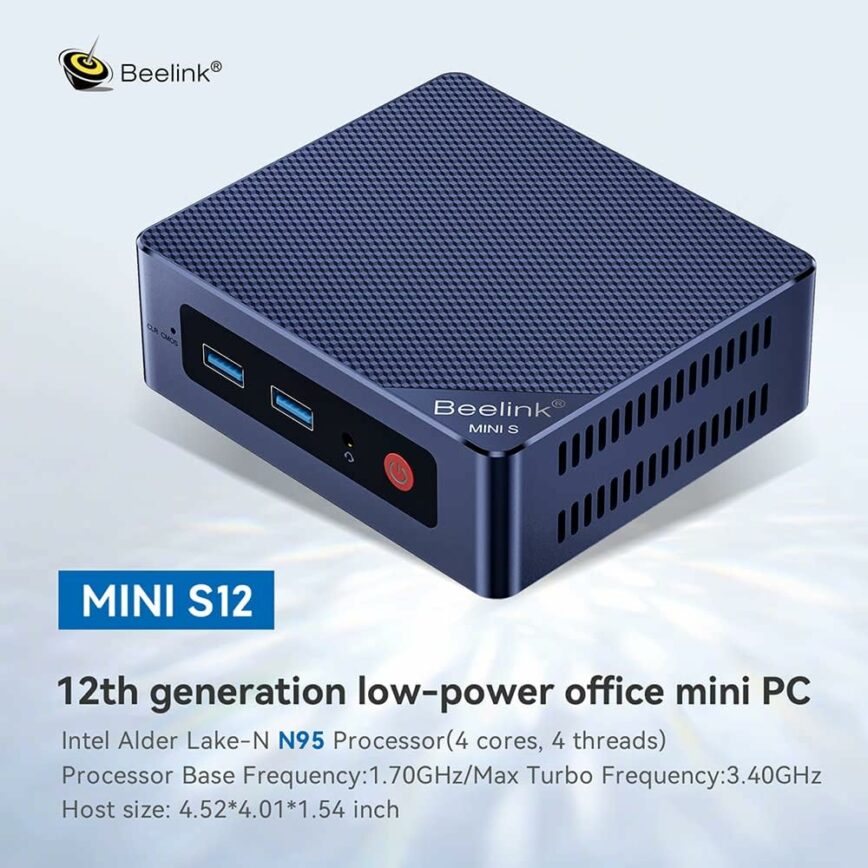
The Beelink Mini S is a compact and versatile mini PC that can serve as an excellent platform for learning and testing Linux-based systems. Its relatively modest form factor belies its capabilities, making it a suitable choice for a Linux enthusiast like yourself who appreciates efficient space utilization and low-power consumption.
Hardware-wise, the Beelink Mini S typically comes equipped with Intel Celeron or Pentium processors, which are more than capable of handling the demands of most Linux distributions. The available RAM and storage options (often starting at 8GB of RAM and 128GB SSD) provide a smooth experience for everyday tasks and allow for reasonable multitasking, which is crucial when running multiple services or containers for testing purposes.
The mini PC’s variety of ports, including USB 3.0, HDMI, and Ethernet, offer ample connectivity options for peripherals and networks, essential for setting up a home lab environment. Its support for dual monitors can be particularly beneficial when managing multiple virtual machines or maintaining a coding environment on one screen and documentation or web resources on another.
From a software perspective, most Linux distributions should run without major issues on the Beelink Mini S. Its mainstream Intel hardware is well-supported by Linux kernel drivers, ensuring good compatibility and performance. Whether you’re using it as a server with a headless setup or as a desktop with a full GUI, you should find the experience to be quite satisfactory.
The compact size of the Beelink Mini S also makes it an ideal candidate for network appliances or for running lightweight servers such as web servers, file servers, or even as a node in a larger distributed application. Its low-power consumption means it can run 24/7 without significantly impacting your electricity bill, a critical consideration for a continuous learning and testing environment.
Cost: From 8GB @ $140 to 16GB < $200.
Specs:
2. Raspberry Pi 5 – the king of hands-on Linux learning.
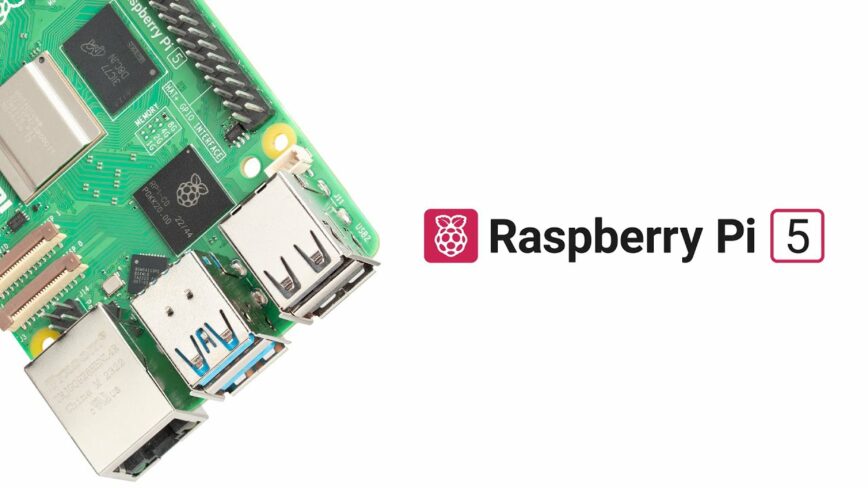
When it comes to Linux tinkering, one device reigns supreme: the Raspberry Pi. This compact yet powerful single-board computer is the undisputed champion of hands-on learning and experimentation in the Linux world. It’s ideal for running lightweight Linux distributions and can serve as a cost-effective test server.
One of its remarkable features is its GPIO (General Purpose Input/Output) pins, which enable you to connect sensors, displays, and other hardware, making it an ideal platform for IoT (Internet of Things) projects. You can transform it into a home server, media center, or even a retro gaming console with the right setup.
Affordable and backed by a thriving community, the Raspberry Pi 5 unlocks the world of Linux. It’s your gateway to Linux mastery in a compact, accessible package.
Cost: From $60 for 4GB board-only to $150 with starter kit (Also, recommended fanless case.)
Specs:
- LPDDR4X-4267 SDRAM (4GB and 8GB)
- Broadcom BCM2712 2.4GHz quad-core 64-bit Arm Cortex-A76 CPU
- VideoCore VII GPU, supporting OpenGL ES 3.1, Vulkan 1.2
- Dual 4Kp60 HDMI display output with HDR support
- 4Kp60 HEVC decoder
- Dual-band 802.11ac Wi-Fi
- Bluetooth 5.0 / Bluetooth Low Energy (BLE)
- microSD card slot, with support for high-speed SDR104 mode
- 2 × USB 3.0 ports, supporting simultaneous 5Gbps operation
- 2 × USB 2.0 ports
- Gigabit Ethernet, with PoE+ support (requires separate PoE+ HAT)
- 2 × 4-lane MIPI camera/display transceivers
- PCIe 2.0 x1 interface for fast peripherals (requires separate M.2 HAT or other adapter)
- 5V/5A DC power via USB-C, with Power Delivery support
- Raspberry Pi standard 40-pin header
- Real-time clock (RTC), powered from by battery.
- Power button
- TDP: 12 W
- Compatible OS: Linux / Windows / OpenWrt / pfSense / Android / Libreelec / etc.
3. NanoPi R6C – mini multifunction (router, PC, etc.) device.
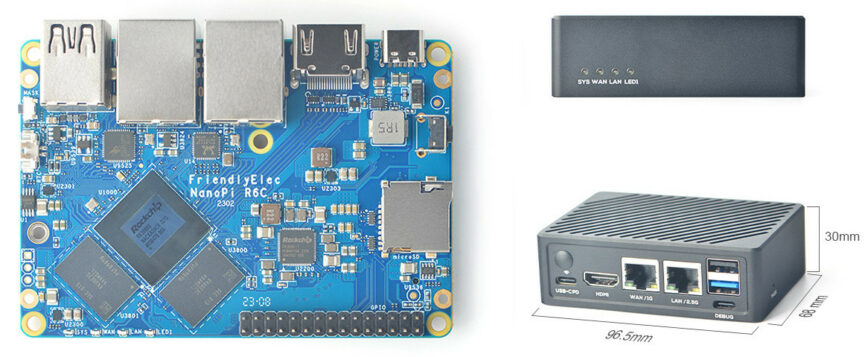
The NanoPi R6C is a versatile single-board computer that can be a Swiss Army knife for Linux enthusiasts. An open-sourced mini IoT gateway device with one 2.5G and one Gbps Ethernet ports, designed and developed by FriendlyElec.
It can be used as an OpenWRT router, allowing you to create a customized network environment with advanced features and security. The NanoPi R6C comes with built-in Docker support, simplifying the deployment of containerized applications and services.
Additionally, you can install various operating systems such, FriendlyWrt Android and Linux distributions like Debian, Ubuntu and many others to explore server management, programming, and development. It works with headless systems as well.
Cost: 8GB model from $150 to $180 including shipping. (power supply not included)
Specs:
- oC – Rockchip RK3588S octa-core processor with:
CPU – 4x Cortex-A76 cores @ up to 2.4 GHz, four Cortex-A55 cores @ 1.8 GHz
GPU – Arm Mali-G610 MP4 quad-core GPU with OpenGL ES3.2 / OpenCL 2.2 / Vulkan1.1 support
VPU – 8Kp60 H.265/VP9/AVS2 video decoder, 8Kp30 H.264 decoder, 4Kp60 AV1 decoder, 8Kp30 H.265/H.264 video encoder
AI accelerator – 6 TOPS NPU - System Memory – 4GB or 8GB LPDDR4X @ 2133 MHz
- MicroSD card socket up to SDR104 mode
M.2 PCIe 2.1 x1 socket for NVMe 2280 SSD
Optional 32 GB eMMC flash (HS400 mode) - Video Output – 1x HDMI 2.1 port up to 8Kp60, or 4Kp120
- 1x 2.5GbE RJ45 port via Realtek RTL8125BG PCIe controller tested up to 2.35 Gbps (Rx) and 2.35 Gbps (Tx)
1x Gigabit Ethernet RJ45 port via Realtek RTL8211F tested up to 941 Mbps (Tx and Rx) - USB – 1x USB 3.0 port, 1x USB 2.0 port
- Expansion – 30-pin 2.54mm header connector up to 1x SPI, 3x UARTs, 3x I2Cs, 2x SPDIFs, 1x I2Ss, 3x PWMs, 1x CAN, 20x GPIOs
- Debugging – 3-pin UART header and USB-C Debug UART port with CH341 chip
- Mask key for eMMC flash update
- 2-Pin 1.27/1.25mm RTC battery input connector for low-power RTC IC HYM8563TS
- 1x user button
- 4x user-programmable LEDs (SYS, WAN, LAN, LED1)
- Power Supply – 5V/9V/12V/20V USB Type-C port (USB PD support)
- TDP: 12 W
- Compatible OS: Linux / OpenWrt / Android / FriendlyWrt.
4. ZimaBoard 832 – Hackable single board server.
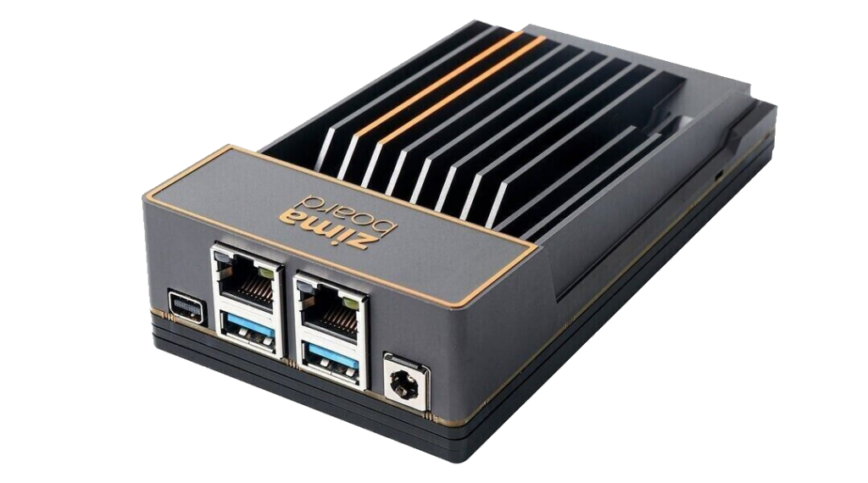
The ZimaBoard 832 is an affordable, high-performance single board server with an Intel Celeron N3450 Quad Core processor, 32GB eMMC, and up to 8GB DDR4 RAM. It’s versatile, supporting Linux, Windows, and other operating systems, making it ideal for server and NAS applications.
With its compact design, dual Gigabit Ethernet LAN, and expandability akin to a micro server, the ZimaBoard 832 surpasses typical single-board computers in capabilities, offering advanced features for networking enthusiasts and Linux administrators. Its robust build and aesthetic appeal make it a practical and attractive choice for hands-on networking and system administration learning.
Cost: From 4GB @ $120 to 8GB @ $200.
Specs:
- CPU: Intel Celeron N3450 Quad Core 1.1-2.2 GHz
- RAM: 8G LPDDR4
- Onboard Storage: 32 GB eMMC eMMC 5.1
- HDD/SSD: 2x SATA 6.0 Gb/s Ports
- LAN: 2x GbE LAN Ports
- USB: 2x USB 3.0
- PCle: 1x PCle 2.0 4x
- Display: 1x Mini-DisplayPort 1.2 4k at 60 Hz
- Passive Cooling
- Virtualization: Intel VT-d, VT-x
- Security: AES-NI
- Transcoding: Support 4K video
- Decoding: H.264 (AVC), H.265 (HEVC), MPEG-2, VC-1
- Pre-installed OS: CasaOS (Based on Debian)
- TDP: 6 W
- Compatible OS: Linux / Windows / OpenWrt / pfSense / Android / Libreelec
Experiment and tinker with Linux devices!
Imagine you’ve been learning about configuring web servers in theory, but now you have the chance to roll up your sleeves and set up Nginx or Apache. This shift from passive reading to active problem-solving deepens your understanding of Linux, turning challenges into learning opportunities.
When you experiment and tinker, you’re honing your troubleshooting skills. Interpreting error messages, navigating logs, and implementing fixes, enables you to become adept at solving complex issues. The command line evolves from a just a tool to a trusted ally, revealing the power of Linux through practical use.
With these three devices in mind, which one will you choose for your Linux learning journey? Have you had the opportunity to use any of them?
Imagine managing diverse Linux systems – servers, databases, and docker containers. Delving into networking complexities, like subnetting, routing, DNS, and DHCP configurations. You gain invaluable insights into the intricacies of interconnected systems, cybersecurity, and network management. This hands-on experience is crucial in today’s digital landscape.
Discover the power of automation. By delving into Bash scripting and Ansible, you’ll find ways to streamline repetitive tasks, boosting your productivity. Throughout this journey, you’re also consistently documenting your experiences. This ongoing process forms a valuable personal knowledge base, reinforcing what you’ve learned and guiding your future projects. What other single-board computers (SBC), Linux compatible devices and gadgets are you looking at? Looking for a bigger challenge? Read my Home Lab Beginners guide (Hardware).
Conclusion
The devices discussed here offer you a gateway to a transformative journey that can elevate your Linux skills to new heights. They bridge the gap between theoretical learning and practical application, allowing you to immerse yourself in the Linux ecosystem in real-world scenarios.
In essence, these Linux devices are your passport to a journey of discovery and growth. They empower you to transform your Linux skills from theory to mastery, equipping you with the knowledge and practical expertise to navigate the ever-evolving landscape of Linux administration and system management. So, roll up your sleeves and dive in!
Note: I am NOT affiliated in any way with any of these manufacturers and receive no compensation for this blog post. To assist you in finding the items, software and tools related to these devices, I have provided helpful links, including affiliate links. This does not affect the recommendations made or the price you pay.
Published: November 14th 2023 | Last updated: January 29th 2024.



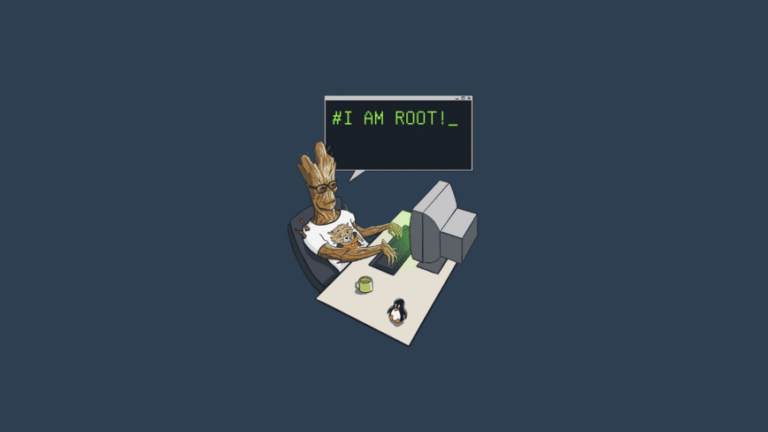

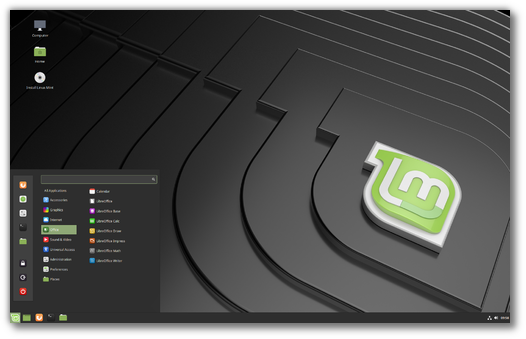
![How to Install Proxmox [Proxmox Series #1]](https://linuxpunx.com/wp-content/uploads/2023/07/how-to-install-proxmox-proxmox-series-1-73-768x432.png)